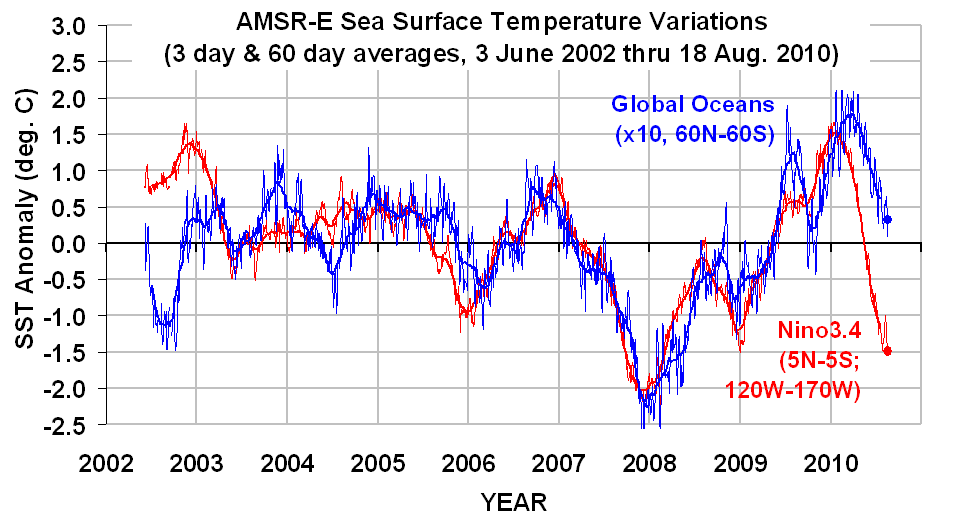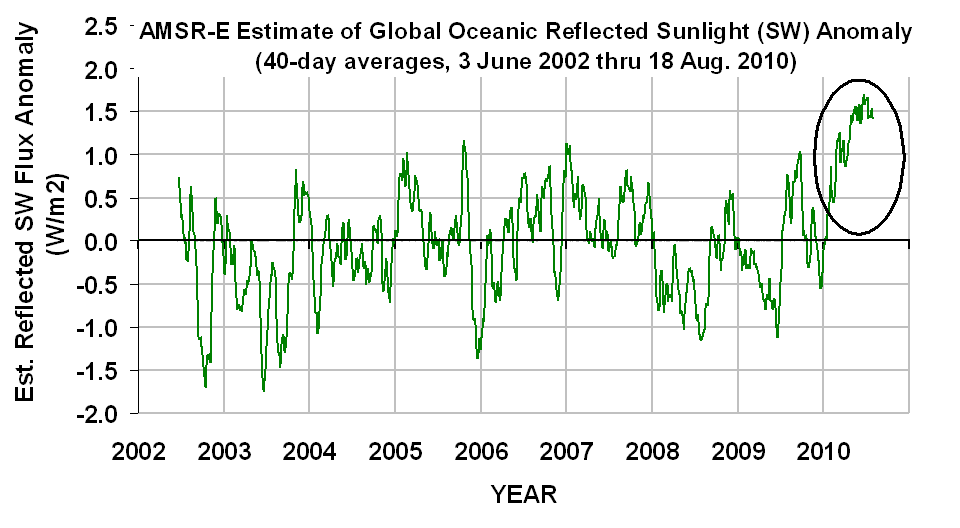Sea Surface Temperatures (SSTs) measured by the AMSR-E instrument on NASA’s Aqua satellite continue the fall which began several months ago. The following plot, updated through yesterday (August 18, 2010) reveals the global average SSTs continue to cool, while the Nino34 region of the tropical east Pacific remains well below normal, consistent with La Nina conditions. (click on it for the large, undistorted version; note the global SST values have been multiplied by 10):

Anomalously High Oceanic Cloud Cover
The following plot shows an AMSR-E estimate of anomalies in reflected shortwave (SW, sunlight) corresponding to the blue (Global) SST curve in the previous figure. I have estimated the reflected SW anomaly from AMSR-E vertically integrated cloud water contents, based upon regressions against Aqua CERES data. The high values in recent months (shown by the circle) suggests either (1) the ocean cooling is being driven by decreased sunlight, or (2) negative feedback in response to anomalously warm conditions, or (3) some combination of (1) and (2). Note that negative low-cloud feedback would conflict with all of the IPCC climate models, which exhibit various levels of positive cloud feedback.

 |

 Home/Blog
Home/Blog



